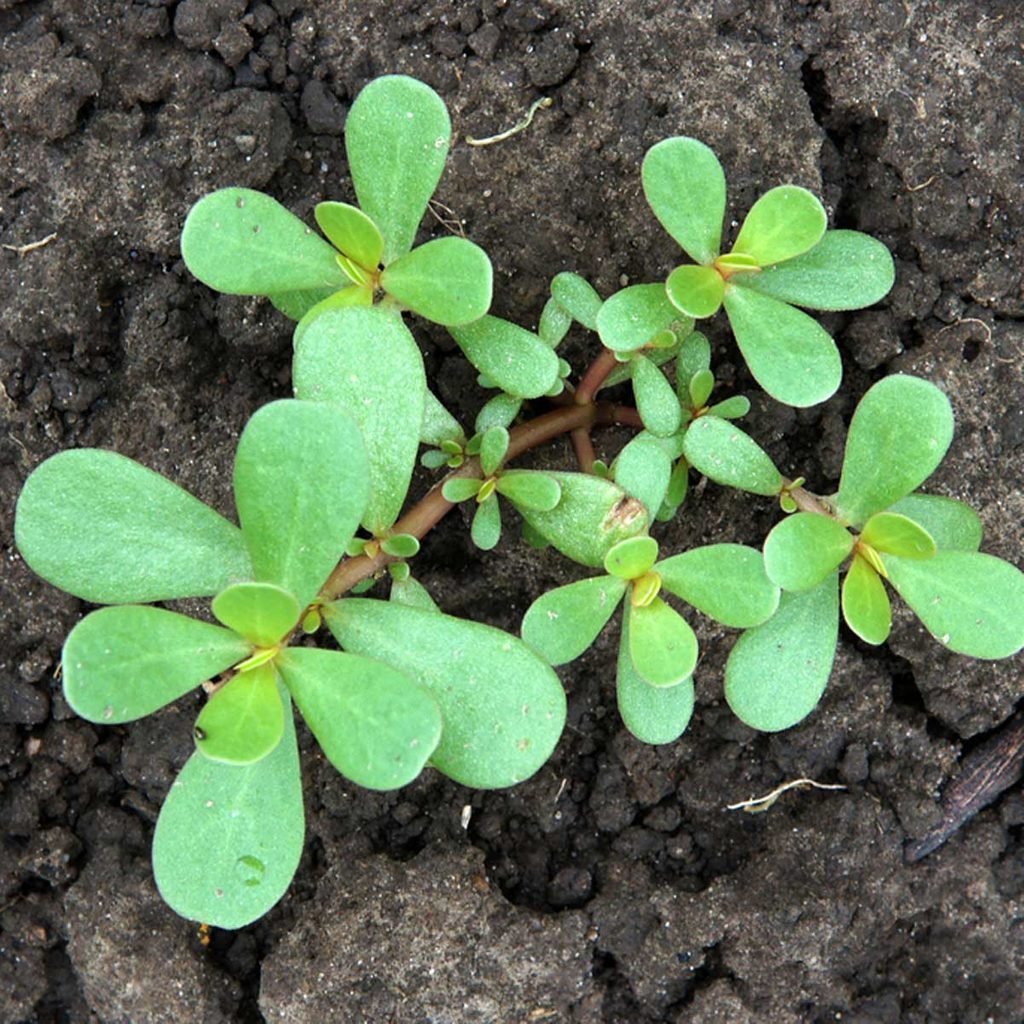What Is Purslane Weed and How Do I Get Rid of It?
Updated: Jul. 15, 2023

The "comeback kid" of lawn weeds, purslane weed frustrates with its wily ability to bounce back just when you think you've gotten rid of it.
Purslane is the ultimate survivor, which also makes it the ultimate nuisance for many homeowners. Not only does this glossy green, fleshy weed often come back stronger than ever when you think you’ve cleared it from your lawn, it also tends to team up with other common invaders.
“Quite frequently, it is associated with other weeds that it will grow in and amongst, including crabgrass and spotted spurge,” says agronomist and lawn care expert Bob Mann, director of state and local government relations for the National Association of Landscape Professionals.
“Purslane is very common in gardens and other cultivated areas. In lawns and landscapes, you’ll most likely find it in planting beds and along the edges of turfgrass.”
Here’s a complete guide to this pesky weed, including how to identify it, eradicate it and — most importantly — make sure it never comes back.
On This Page
What Is a Purslane Weed?
Purslane, also known as portulaca, is a summer annual broadleaf weed. “That means that it completes its life cycle within a single year, germinating in the spring or early summer, going to seed and dying once cold weather returns,” Mann says.
According to Drew Wagner of Sod Solutions, purslane closely resembles spurge, with teardrop-shaped leaves and a low spreading growth habit. It sprouts yellow flowers with five petals and has purple or red stems that grow laterally across the surface of the soil. It usually starts germinating in the spring and grows throughout the summer and the fall.
Purslane can re-root itself from even a fragment of stem or leaves left in the soil, and mature plants shed up to 50,000 seeds for new growth. That’s why this aggressive weed can quickly take over large sections of your yard and divert water and nutrients from your grass. Purslane is a succulent, so it stores moisture in its fleshy leaves like a cactus. It will invade thin or bald patches of lawn and quickly dominate weakened grass.
Is Purslane Weed Safe?
Purslane is actually an edible plant, so it poses no danger to humans or pets. “Folklore suggests that purslane was one of our first vegetables and all parts of the plant can be consumed, either cooked or raw,” Mann says. Its taste is described as lemony or similar to spinach. The flavor reaches its peak if the fleshy leaves are picked while young and tender.
Before adding purslane to your garden salad, however, be sure that it hasn’t been treated with fertilizers or herbicides. And make certain you’ve correctly identified it. “Purslane can be used in kitchen recipes,” says Wagner. “However, it closely resembles spurge in appearance, which is poisonous.”
How to Get Rid of Purslane Weed
The good news is, a single purslane plant generally spreads out over a large area, making it less labor-intensive to clear your yard. The bad news is that you need to be meticulous in how you eradicate the weed to keep it from popping back up.
“Purslane can be removed by hand-pulling or with the use of chemical controls,” says Wagner. “Hand-pulling is often not recommended because if a small amount of plant stem or root is left behind, it will keep growing.”
To remove by hand:
-
Do it when the plant is still young to avoid spreading seeds.
-
Find the center of the clump (or “rosette”) and pull up firmly, making sure to take the entire root.
-
Bag the pulled plant in paper or plastic so it can’t scatter any seeds.
-
Check the area for stem or leaf fragments that could regenerate.
Alternatively, “purslane can be controlled with common broadleaf weed control products that are used for other common weeds such as dandelion or clover,” Mann says.
To clear purslane with herbicide:
-
Pull mature plants as detailed above.
-
Spray seedlings with 2,4 D herbicide.
-
Apply pre-emergent herbicide in the spring to prevent reoccurrence.
How to Prevent Purslane Weed From Coming Back
Purslane is famous for its staying power. Overlooked fragments of leaves and stems can germinate into a full-grown invasion in a single season. Mature plants are aggressive seeders, casting seeds over large areas of your lawn that can lie dormant for decades. You’ll likely battle purslane for years if you don’t eradicate it properly to nip the problem in the bud.
Here are some helpful tips to avoid a frustrating resurgence:
-
“Purslane is a weed that is well-controlled by following best management practices for your lawn and landscape,” Mann says. “Keeping your mowing height on the tall side and lawn properly fertilized to encourage a vigorous healthy stand of turf will keep purslane and many other weeds at bay.”
-
Try to tackle your purslane problem while the plants are young to avoid scattering seeds. If you are hand-pulling mature plants, cover the cleared area with a black plastic gardening tarp or heavy-duty trash bags for four to six weeks. The sunlight on the black plastic heats the topsoil to kill any residual seeds and blocks sunlight from any purslane fragments that attempt to sprout again.
-
Remember to bag any pulled purslane in plastic or paper. Don’t add the plants to your compost or you will reseed them in your yard when you spread the compost.
-
Create a three-inch barrier of mulch (bark, ornamental rocks or another ground covering) to prevent low-growing purslane from taking up residence.
